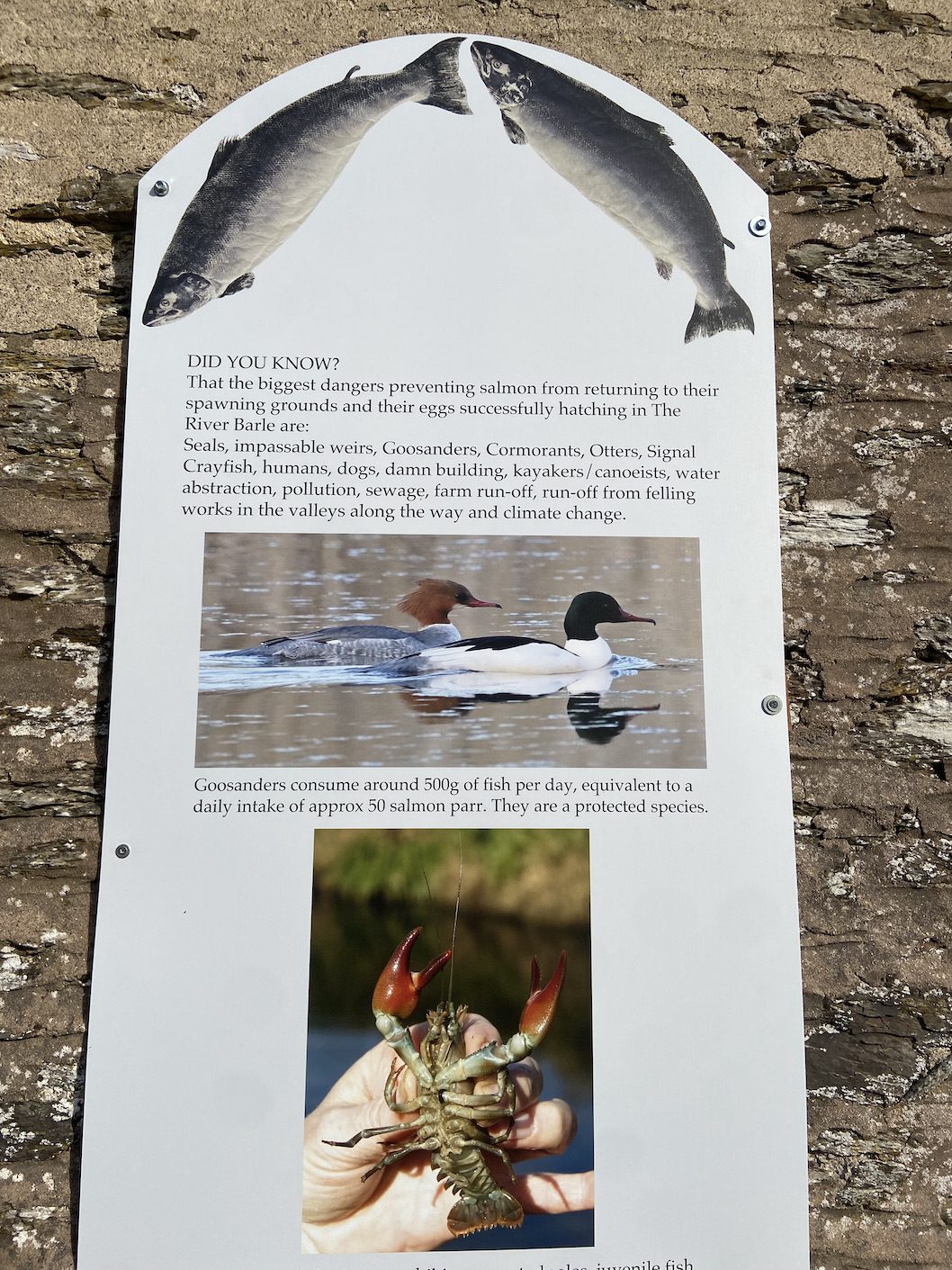RIVER EXE – SALMON
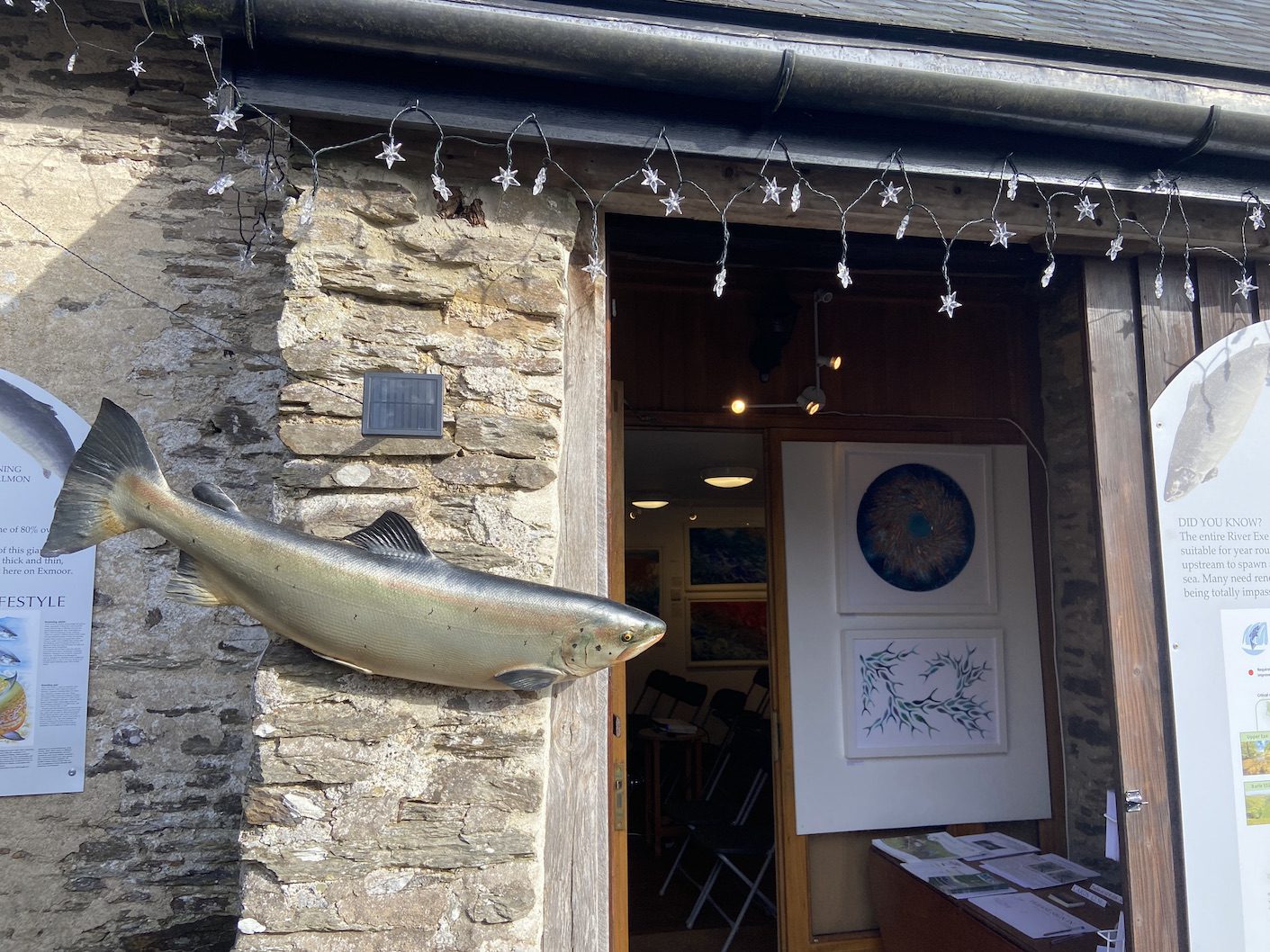
Lanacre Barn Gallery is situated in the heart of Exmoor a short distance from Lanacre bridge that straddles the River Barle. The gallery is hosting an exhibition focusing on fish and life within water. https://moorlandart.com

‘Fabulous Fish’ will run daily from 25thMarch – 8th April 2023, from 11am-5pm, at Lanacre Barn Gallery in Withypool, Exmoor, TA24 7SD. It will be open to the public, admission is free, and refreshments will be available.
As part of this event a talk was held with Phillip Turnbull Fisheries Technical Officer with the Westcountry Rivers Trust. The talk entitled The River Exe – A River Full of Fish, gave a fascinating insight into the history of the river Exe and the fish that have swum within.
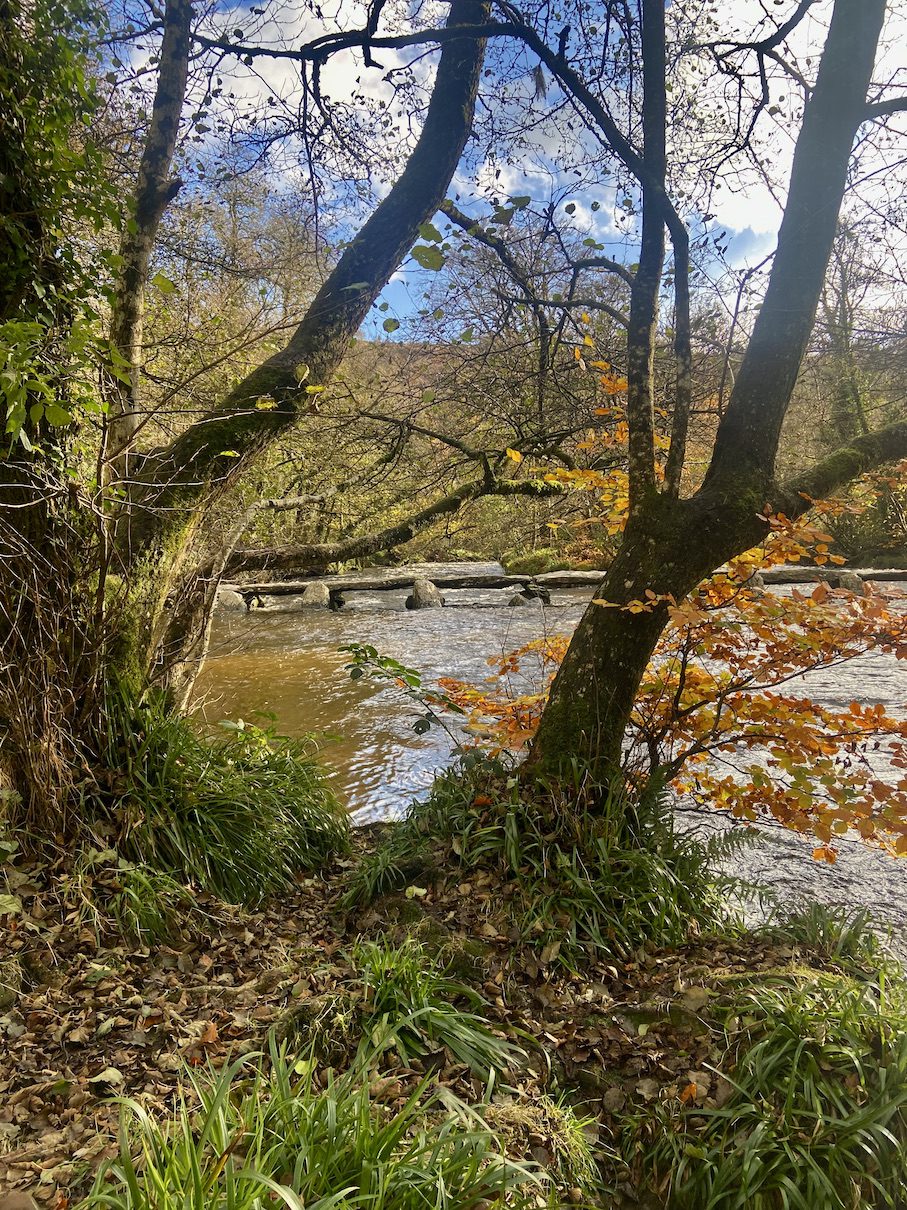
The Westcountry Rivers Trust aims to enhance and protect rivers across the region with the long term survival of fish at the heart. Phillip listed the fish that have been recorded in the Exe including migratory and non-migratory species. Migratory species include salmon, sea trout, eel, lamprey ( sea, brook and River) Allis/ twaite shad, Atlantic Sturgeon. Non migratory fish include brown trout, grayling, bull head, stone loach and minnows.
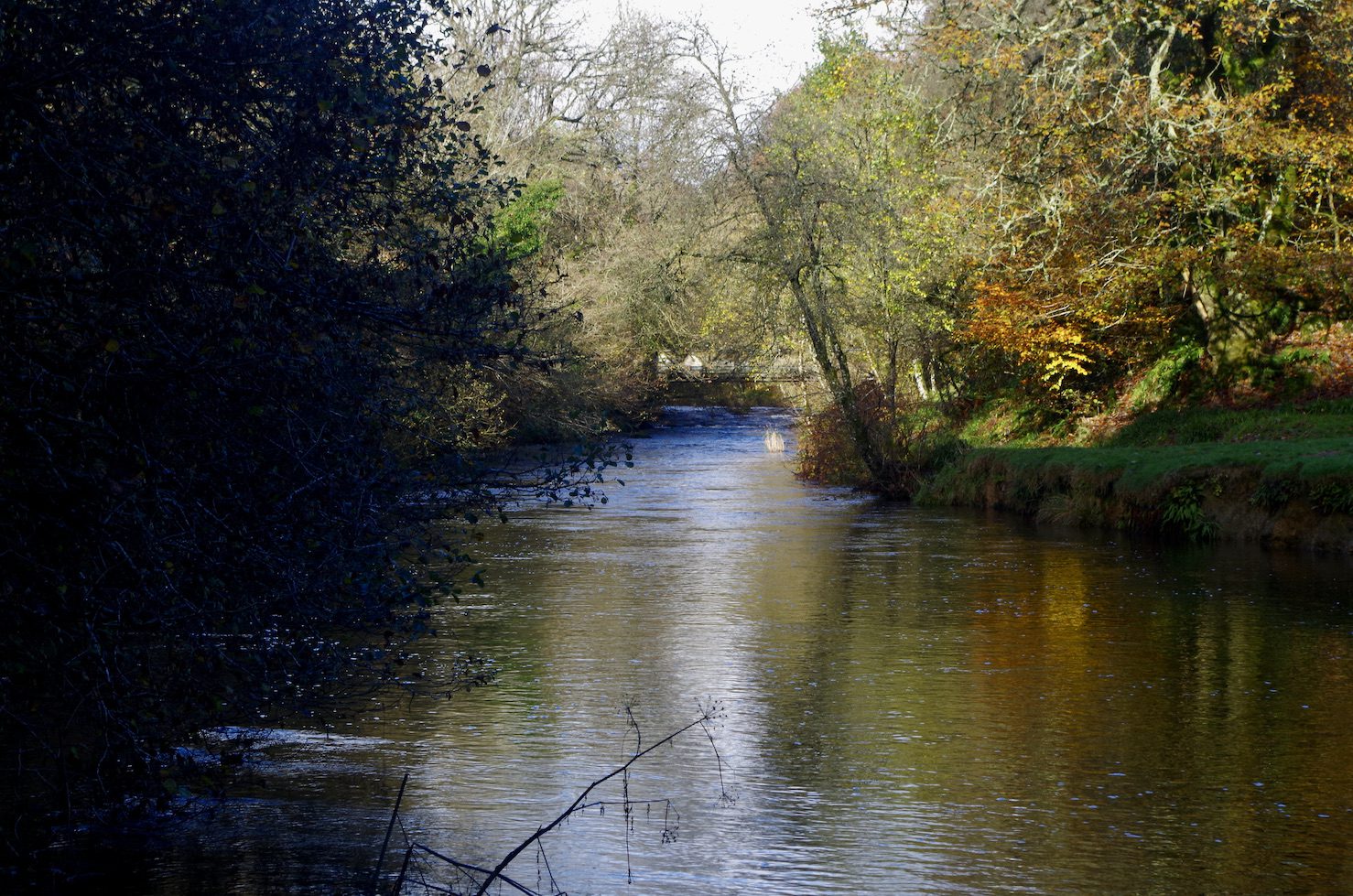
The salmon are of course the most iconic of these species and much of the talk focused upon salmon and their past and future. The story of salmon on the Exe is an all too familiar tale with a dramatic decline in recent decades. Salmon are believed to have been harvested from the Exe since before Roman Times. Records from 1771 tell of a catch of 1000 salmon in Exeter in one week, A river full of fish indeed!
The largest salmon recorded from the River Exe was caught in a net at the mouth of the River in 1924 and weighed 61lb 4oz. I believe a cast of the fish can still be seen in the museum at Topsham.
Migratory fish (all species) have declined globally by 76% and 93% in Europe alone. This is reflected in global Atlantic salmon populations with a steady decline since the 1970s, with an estimated 50-70% decline in the past 40-50 years. River Exe salmon are classified as ‘At Risk’ meaning we need to work together to reverse the decline.
Salmon are seen as a keystone species the proverbial ‘Canary in the mine’.
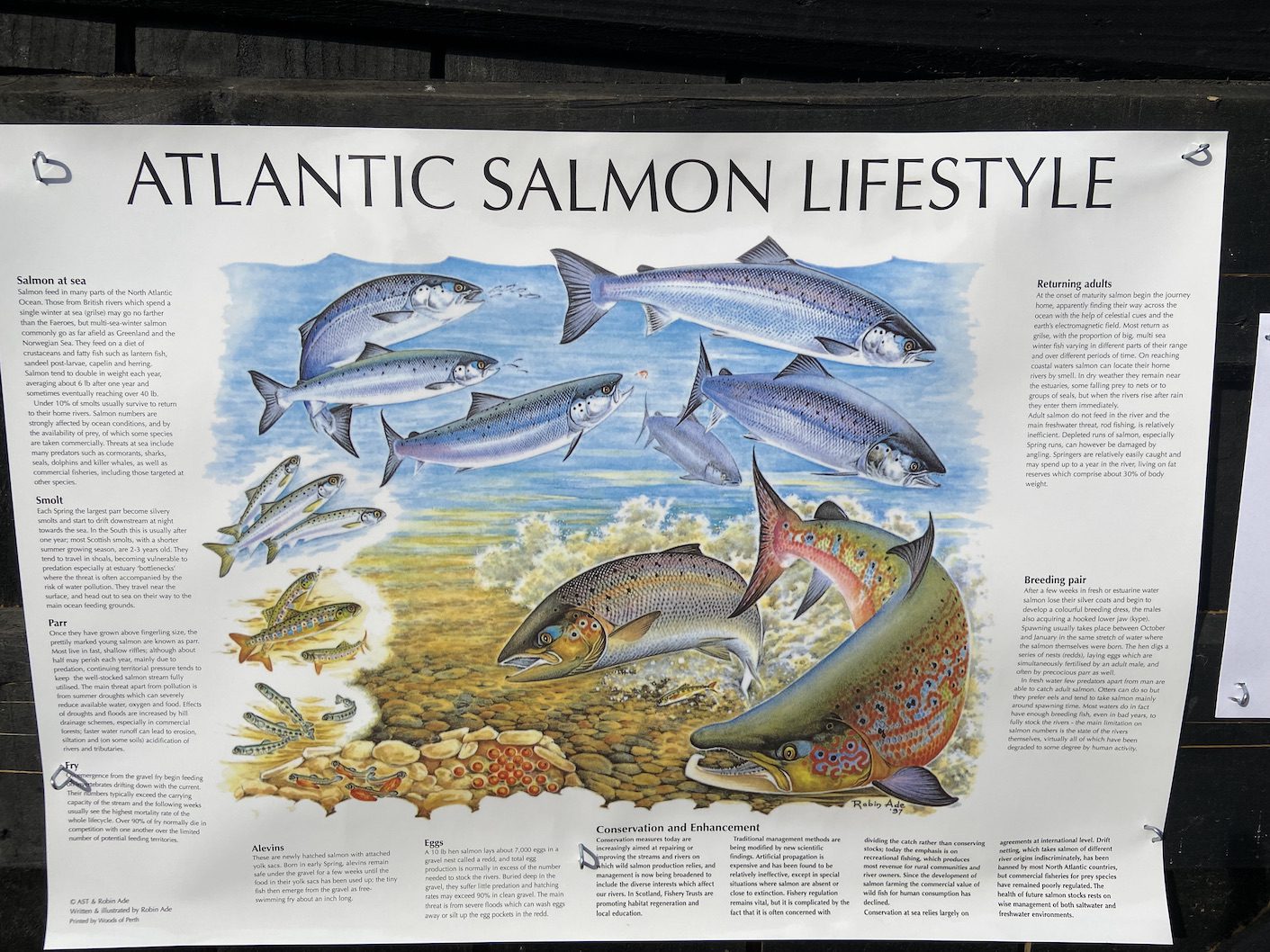
An ambitious five point plan has been implemented to reverse the decline in stocks.
- Improve Marine Survival – Missing salmon alliance https://missingsalmonalliance.org
- Reduce exploitation – Catch and Release, Netting ban
- Remove barriers to Upstream migration
- Improve Water Quality
- Safe Guard Flows
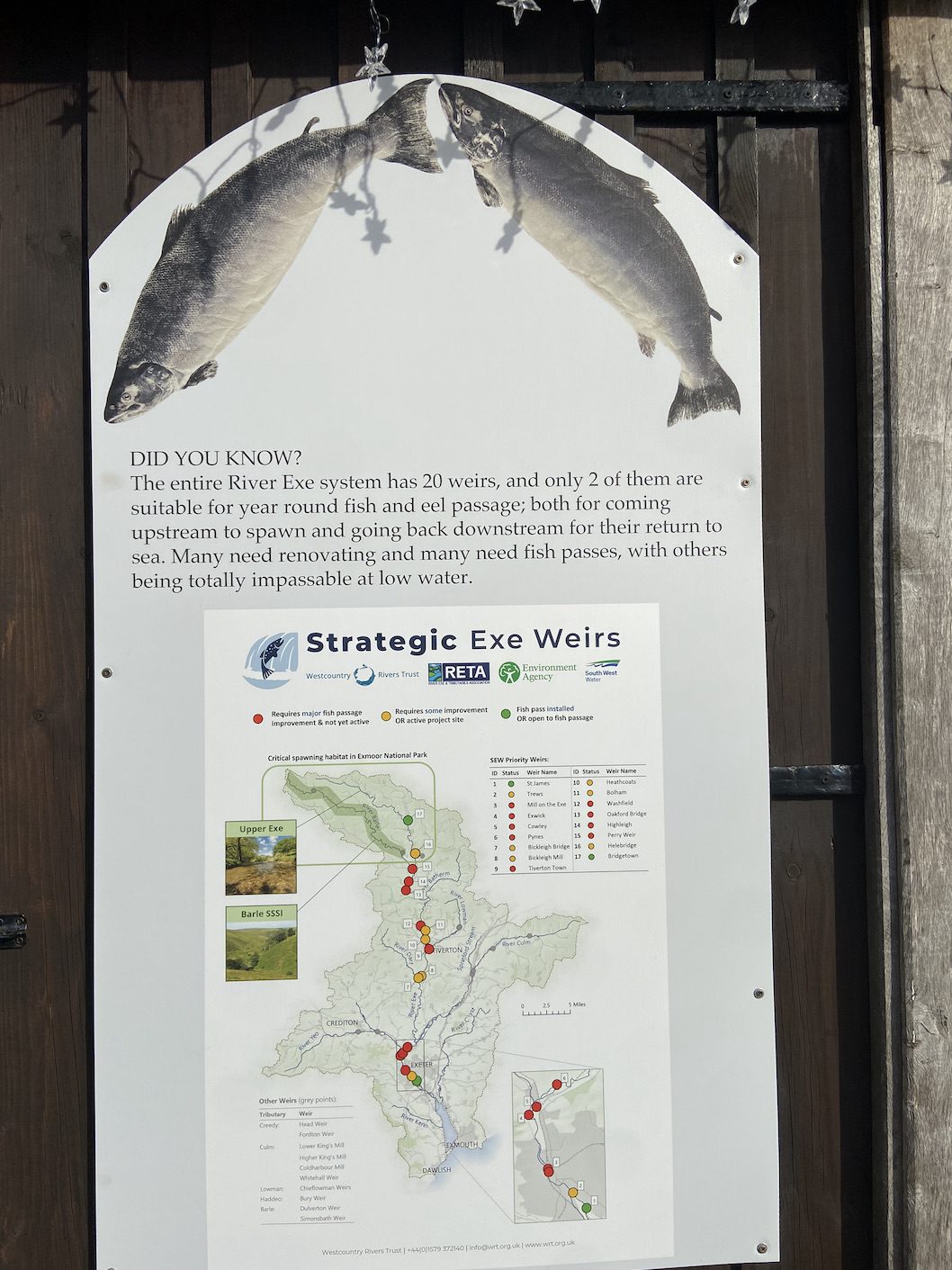
The present focus is to deliver bespoke fish passage improvements at all remaining weirs on the river, whether this be removal or installing site-suitable fish passes.
A similar initiative was undertaken on the River Taw and has resulted in some promising signs.
The River Barle has been identified as the prime spawning area on the Exe system and is an SSSI with good water quality and significant redd capacity.
Climate change is having a significant impact on river flows and weirs are impacted upon with times of optimum flow reduced. Salmon migration both upstream as adults and downstream as smolts is impacted upon by high and low flows. Up to 50% of smolts are thought to perish in the rivers. The slowing descent of smolts disrupts their marine feeding time, water quality is impacted by low flows and predation is increased.
The weirs can be removed or modified to incorporate fish passes. The project involves a great deal of research to determine ownership and complex negotiations to deal with abstraction licences and use. RETA ( The River Exe & Tributaries Association) Is working in partnership with Westcountry Rivers Trust, which is supported by the Environment Agency and South West Water.
The talk also highlighted many factors that can impact on salmon and river life some of which do not immediately spring to mind. The redds are vulnerable to disturbance during the winter and early spring and care should be taken when entering the river at this time. Veterinary products used to treat dogs such as Spot On are highly toxic to invertebrates living within the river. Wild swimming is also a concern with sunscreen highly toxic especially during times of low water when dilution is minimal.
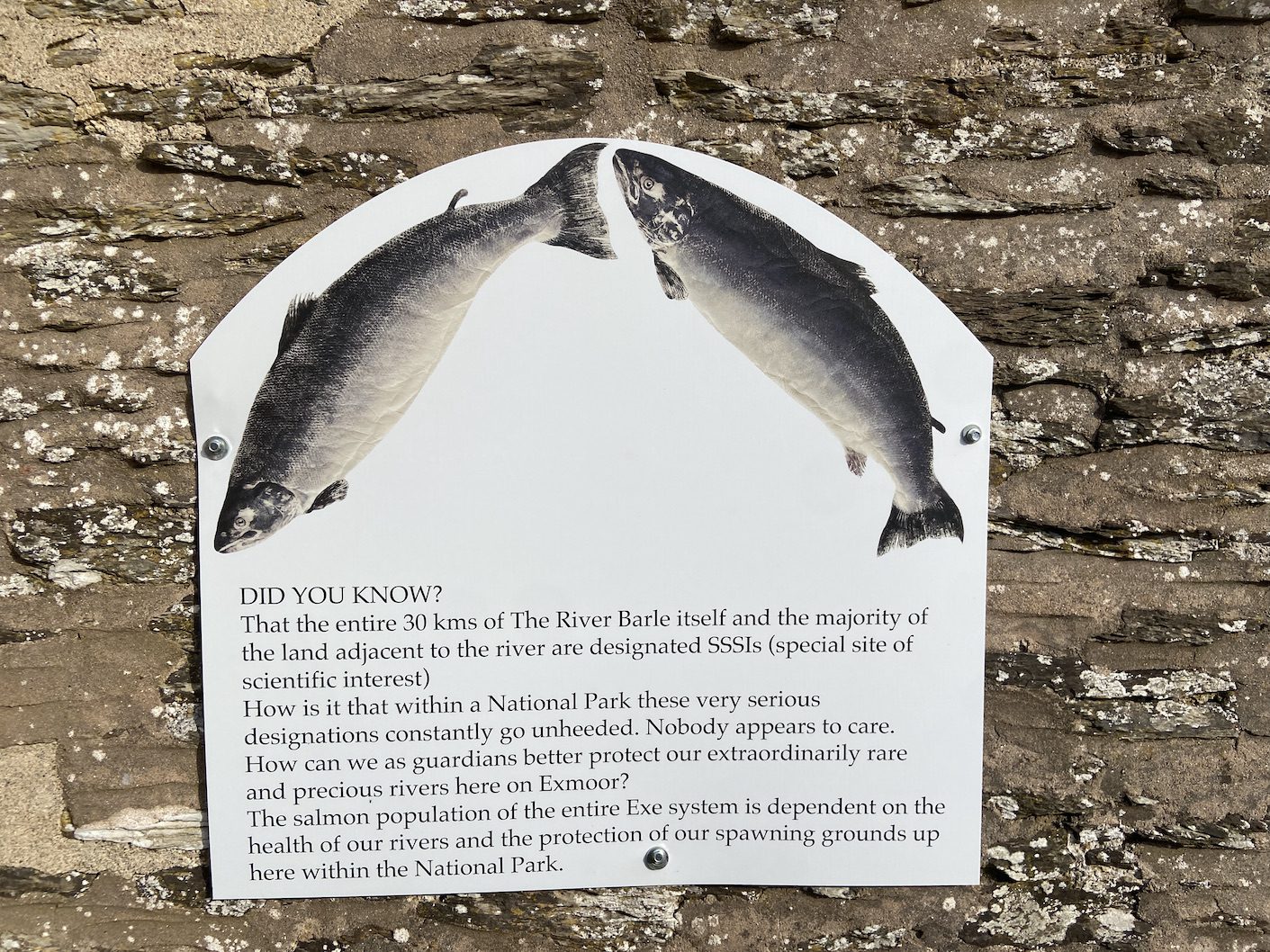
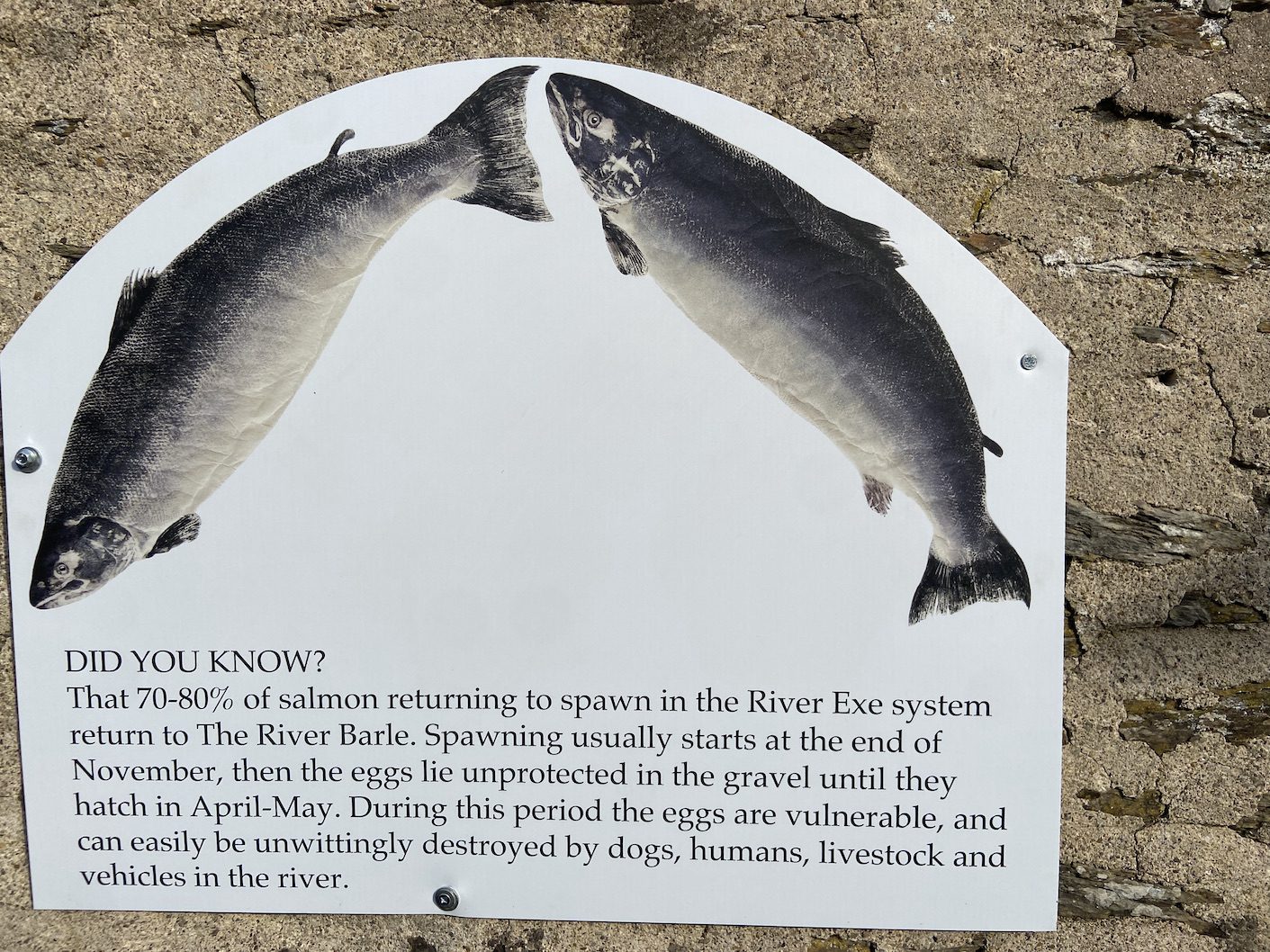
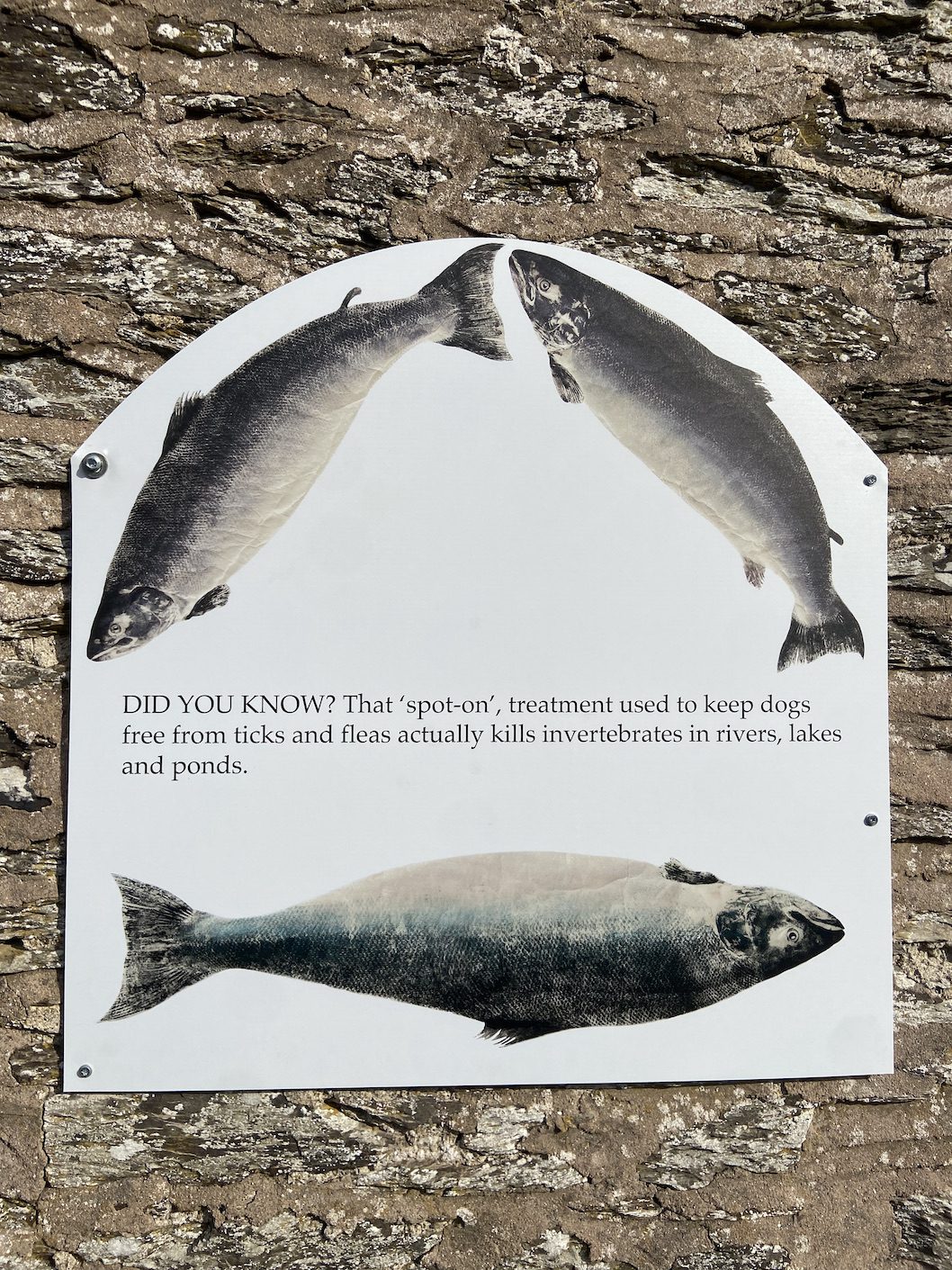
AWARENESS of the river environment is key with education essential. Citizen Science can play a significant role in highlighting issues with regular monitoring of water quality a key initiative. The underfunded EA does not have the resources to carry out adequate monitoring.
The River Fly Monitoring program can also play a significant role in identifying and highlighting problems. https://www.riverflies.org
Connection with our rivers is vital in helping us to understand their delicate and unique eco systems.
Nicky Green gave a talk on the Invasive signal crayfish that are now to be found throughout much of the Exe system. These crustaceans carry a plague that kills the native white tailed crayfish. They predate heavily upon invertebrates, fish eggs, fry and lichens. They also burrow deeply into banks resulting in siltation and erosion.
The crayfish were introduced during the mid 1970’s as part of a failed food industry plan.
